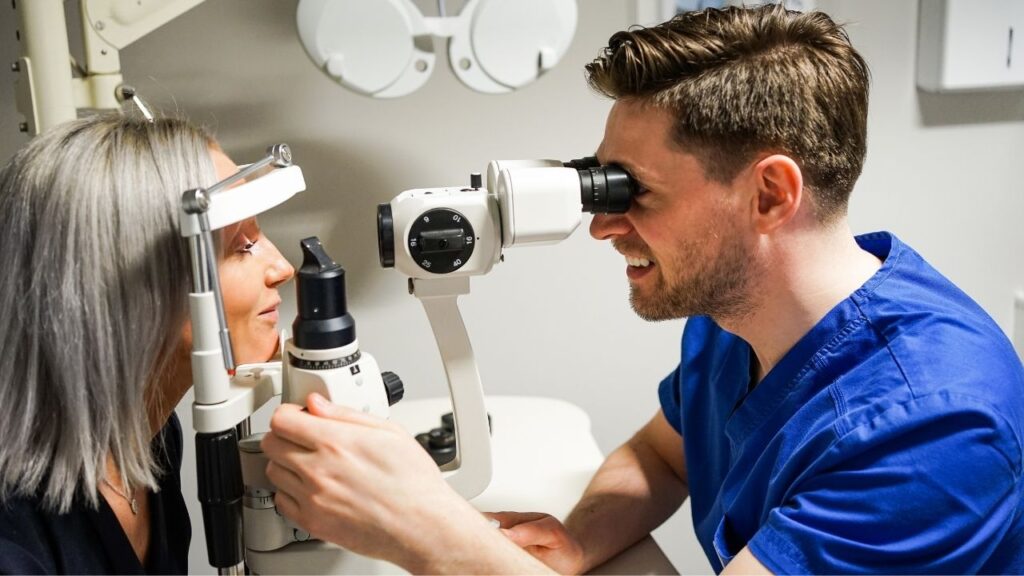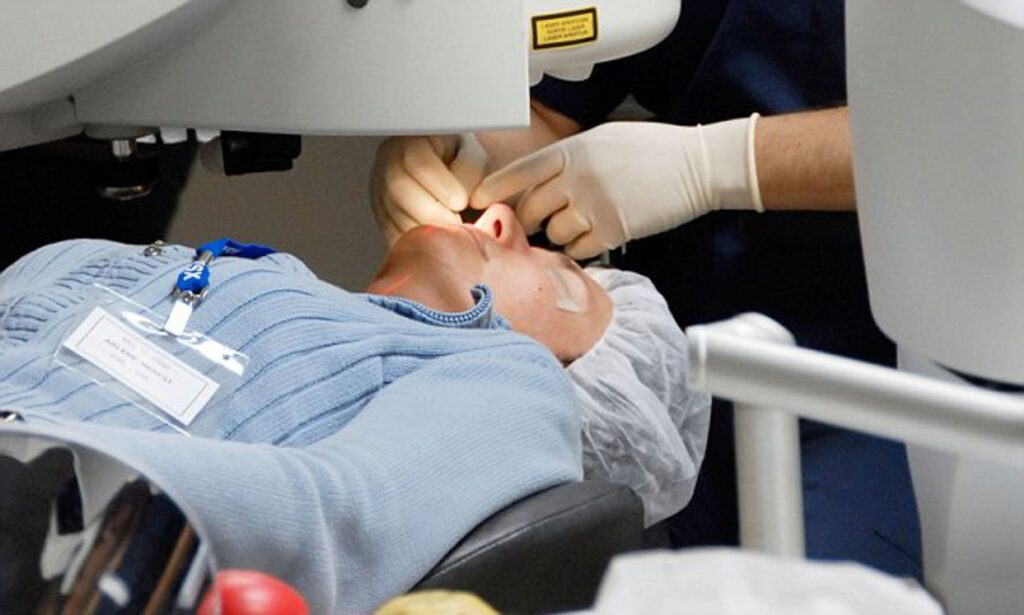Cataract surgery is a common surgical procedure that can significantly improve vision for those experiencing the effects of cataracts. In this article, we will explore what cataract surgery entails, how to prepare for the procedure, the surgery process itself, potential risks and complications, and what life after cataract surgery looks like.
What is Cataract Surgery?
Cataracts surgery is a procedure performed to remove a cloudy lens from the eye, known as a cataract, and replace it with a clear artificial lens called an intraocular lens (IOL). Cataracts are a common age-related condition in which the natural lens of the eye becomes clouded, leading to blurred vision and difficulty seeing clearly.
Defining Cataracts and Their Impact on Vision
Cataracts are the result of the natural aging process of the eye. Over time, proteins in the lens of the eye start to clump together, causing the lens to become cloudy. This clouding obstructs the passage of light and affects the quality of vision. Common symptoms include blurred vision, difficulty seeing at night, glare sensitivity, and an overall decrease in visual acuity.
It’s important to note that while cataracts are primarily associated with aging, they can also develop due to other factors such as eye injuries, certain medications, or medical conditions like diabetes. Regular eye exams are crucial for early detection of cataracts and other eye issues.

The Basics of Cataract Surgery
Cataract surgery is a highly successful and relatively simple procedure that is typically performed on an outpatient basis. Before the surgery, the eye is numbed with local anesthesia, and the patient remains awake throughout the process. The surgeon creates a small incision in the eye, removes the clouded lens, and replaces it with an artificial lens that helps restore clear vision.
The surgery usually takes around 15-30 minutes to complete, and most patients can go home shortly after the procedure. Full recovery and improved vision can typically be expected within a few weeks.
Modern advancements in cataract surgery techniques have made the procedure even safer and more effective. One such innovation is the use of femtosecond laser technology, which allows for precise incisions and helps in breaking up the cataract for easier removal. Additionally, premium intraocular lenses are now available, offering patients the option for improved vision at various distances, potentially reducing the need for glasses after surgery.
Preparing for Cataract Surgery
Before undergoing cataract surgery, an initial consultation and eye examination with an ophthalmologist are essential. During this consultation, the surgeon will assess the severity of the cataract, discuss potential risks and benefits, and answer any questions or concerns the patient may have.
It is important for patients to feel comfortable and informed during this initial consultation, as it sets the stage for the upcoming surgical procedure. The ophthalmologist will take the time to explain the entire process of cataract surgery, from pre-operative preparations to post-operative care, ensuring that the patient has a clear understanding of what to expect.
Initial Consultation and Eye Examination
The initial consultation involves a comprehensive eye examination to determine the exact nature and extent of the cataract. The ophthalmologist will evaluate the patient’s overall eye health, measure the intraocular pressure, and perform various diagnostic tests to assess visual acuity and the presence of other eye conditions.
During the eye examination, the ophthalmologist may also discuss the different types of intraocular lenses (IOLs) available for implantation after cataract removal. These lenses can correct various vision problems, such as nearsightedness, farsightedness, and astigmatism, reducing the need for glasses or contact lenses after surgery.
Pre-Surgery Instructions and Expectations
Prior to undergoing cataract surgery, the surgeon will provide specific instructions to ensure optimal surgical outcomes. These instructions may include abstaining from certain medications, eye drops, or food and drink prior to the procedure. It is crucial to follow these instructions closely to minimize the risk of complications and prepare the eye for surgery.
In addition to following pre-surgery instructions, patients should also have realistic expectations about the results of cataract surgery. While the procedure is highly successful in improving vision and quality of life for many patients, individual outcomes may vary based on factors such as the severity of the cataract, overall eye health, and the presence of other eye conditions.

The Cataract Surgery Procedure
During cataract surgery, the surgeon will perform several steps to remove the clouded lens and replace it with an artificial lens. Let’s take a closer look at the surgical process.
An Overview of the Surgical Process
The surgery begins with the application of eye drops to dilate the pupil and numb the eye. This ensures that the patient remains comfortable throughout the procedure. Once the eye is properly prepared, the surgeon creates a tiny incision in the eye to access the cloudy lens. The incision is so small that it does not require stitches, which helps to minimize any scarring.
Using specialized tools, the surgeon carefully breaks up the cataract into smaller pieces. This technique, known as phacoemulsification, allows for easier removal of the clouded lens. The surgeon then suctions out the fragmented pieces, leaving behind a clear space in the eye.
With the cataract removed, an intraocular lens (IOL) is inserted to replace the natural lens. The IOL is made of a biocompatible material and is designed to restore clear vision. The surgeon ensures proper positioning of the IOL, taking into consideration factors such as the patient’s eye measurements and any pre-existing conditions.
Once the IOL is in place, the surgeon closes the incision without the need for stitches. The self-sealing nature of the incision helps to promote faster healing and reduces the risk of infection. The entire surgical process typically takes about 15-20 minutes per eye, and most patients are able to go home on the same day.
Post-Surgery: Recovery and Healing
After cataract surgery, it is important to allow time for the eye to heal. The patient may experience some discomfort, dryness, or mild itching in the days following the procedure, which can be alleviated through prescribed eye drops. These drops help to reduce inflammation and prevent infection, ensuring a smooth recovery.
During the recovery period, it is crucial to follow the surgeon’s post-operative care instructions. This includes avoiding strenuous activities, such as heavy lifting or bending over, as these can put strain on the eyes and impede the healing process. It is also important to protect the eye from excessive sunlight or dust by wearing sunglasses and avoiding dusty environments.
Attending follow-up appointments is an essential part of the recovery process. These appointments allow the surgeon to monitor the healing progress and assess the patient’s vision. Any concerns or questions can be addressed during these visits, ensuring that the patient receives the necessary support and guidance throughout the recovery period.
Most patients notice a significant improvement in vision within the first few days after surgery, but complete healing may take several weeks. During this time, it is important to be patient and vigilant about protecting the eyes. Following the surgeon’s instructions and maintaining good eye hygiene will help to ensure a successful and comfortable recovery.
Risks and Complications of Cataract Surgery
Like any surgical procedure, cataract surgery carries some risks and potential complications. However, these risks are relatively rare, and the procedure is considered to have a high success rate. Let’s explore some of the possible risks involved.
Before undergoing cataract surgery, it’s essential to have a thorough discussion with your ophthalmologist to understand the potential risks and benefits. While the chances of experiencing complications are low, being informed can help you make the best decision for your eye health.
Potential Short-Term Complications
Short-term complications of cataract surgery may include infection, bleeding, inflammation, or increased intraocular pressure. If any of these occur, immediate medical attention should be sought. Fortunately, most of these complications can be effectively managed with appropriate treatment.
During the immediate post-operative period, it’s crucial to follow your surgeon’s instructions diligently to minimize the risk of complications. This may include using prescribed eye drops, avoiding strenuous activities, and attending follow-up appointments as scheduled to monitor your eye’s healing process.
Long-Term Risks and How to Mitigate Them
Long-term risks of cataract surgery are rare but can include retinal detachment, secondary cataract formation, or glaucoma. Regular post-operative follow-up appointments with the surgeon and adherence to recommended eye care practices can help detect and manage these potential risks in a timely manner.
As part of your long-term eye care plan, maintaining a healthy lifestyle, including a balanced diet rich in antioxidants and regular exercise, can support overall eye health and potentially reduce the risk of certain long-term complications post-cataract surgery. Remember, your eye health is a lifelong journey that requires proactive care and attention.

Life After Cataract Surgery
After cataract surgery, patients often experience a remarkable improvement in their vision, leading to a better quality of life. Let’s explore what life post-surgery may look like.
Adjusting to Improved Vision
With the clouded lens removed and a clear artificial lens in place, patients can expect clearer, sharper vision. Colors may appear more vibrant, and previously blurred or distorted vision will be greatly enhanced. Many patients report being able to read, drive, and engage in various activities without the need for glasses or contact lenses following cataract surgery.
It’s not uncommon for individuals to feel a sense of wonder and joy as they rediscover the world with their newfound clarity of vision. Simple pleasures such as watching a sunset, reading a book, or recognizing a loved one’s face with precision can bring immense satisfaction and gratitude after cataract surgery.
Maintaining Eye Health Post-Surgery
Although cataract surgery improves vision, it is still important to maintain good eye health. Regular eye examinations, proper nutrition, and protection from sunlight and harmful environmental factors are crucial for maintaining optimal vision in the long term. The ophthalmologist will provide specific guidance on how to care for the eyes after cataract surgery.
Furthermore, staying informed about potential changes in vision and promptly addressing any concerns with the eye care team can help ensure continued eye health and visual acuity. Developing a proactive approach to eye care post-surgery can contribute to sustained improvements in vision and overall well-being.
Understanding cataract surgery is essential for those considering the procedure or seeking more information about how it can improve their vision. With advancements in surgical techniques and the use of intraocular lenses, cataract surgery has become a safe and effective solution for restoring clear vision and enhancing overall quality of life.
More to read: The Latest Advancements in Cataract Surgery Techniques
